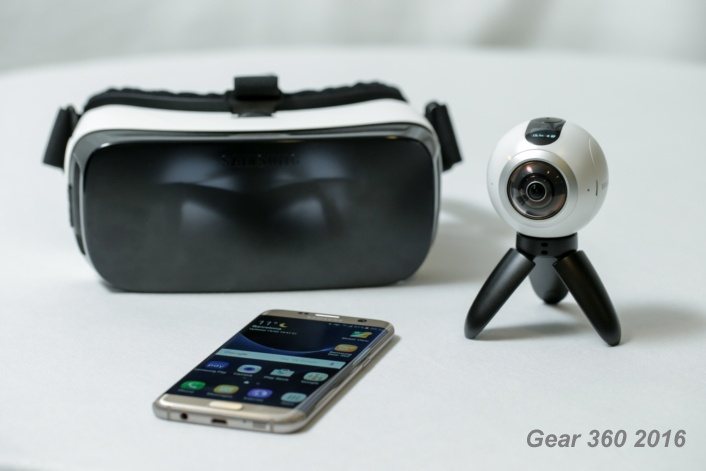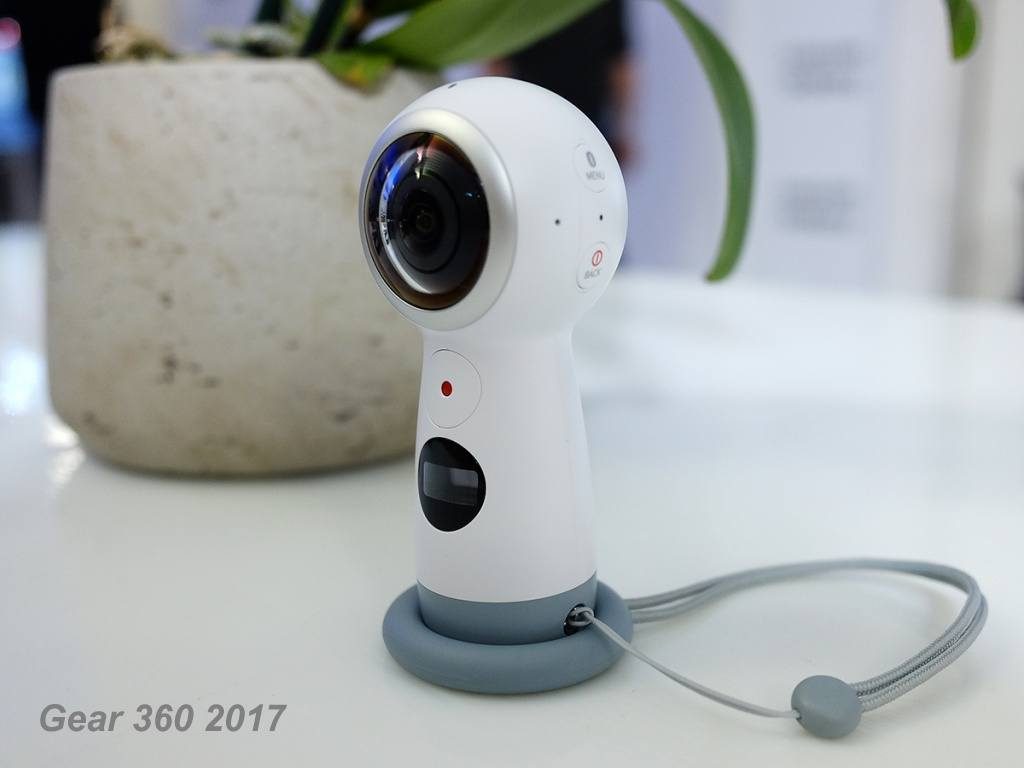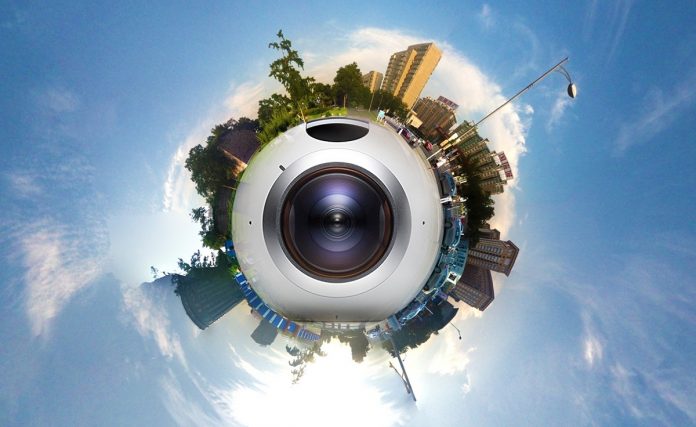The 2017 upgrade to the Gear 360 is clearly very different from last year’s model, as anyone can see at first glance. The new model is very much slimmer and more compact. Most disturbingly, though, when you look at the specifications of the two models, it seems at first glance that the specifications of the new model are lower than those of the original. However, in this case, those specifications are really quite misleading, as you’ll see as we examine both Gear 360 models in depth.
For those who still don’t know what the Gear 360 does, here’s the standard ‘propaganda’ video…
So there are two models, 2016 and 2017 – What’s the big deal?
Well, to compare them, let’s start by looking at the obvious…
When you do that, you see that in the old Gear 360, the creators had placed the battery and the processor module in a little space between the two lenses. This meant that the camera was very flexible, and could be mounted anywhere – on the head while rock climbing, or on the hand when bungee jumping. People took advantage of this flexibility to do these things, and many more, leading to some amazing – or very personal – 360 degree videos, as you’ve just seen above.

Let’s take a look at the specifications of the two cameras.
As I said above, when you compare the two Gear 360 from 2016 and 2017, you find that the old one has quite a bit more width between the two lenses, to fit the battery and processor module.
The new one is more slim, with less space between the lenses.
This is a significant difference, and we’ll come back to it later.
For the rest, the new camera creates images in 15 MP, as compared to the 30 MP of the old camera. Its dual lens video resolution is significantly higher, but the single lens video resolution is significantly lower – however, with that lower resolution comes double the frame rate!

Breaking things down – which Gear 360 is superior?
As I mentioned briefly earlier, the biggest advantage of the new Gear 360 is the fact that the lenses are closer together. This makes 360 degree views more natural, and allows the images from the two cameras to be ‘stitched’ to each other more perfectly. With the older model, there were often areas of warped distortions where the images of the two lenses joined.
I wouldn’t take the lesser megapixels too seriously – higher megapixels do not necessarily mean that an image is more detailed. Often, it just means that the image is larger, and takes more space to store – without necessarily having more detail.
Of course the 2017 model of the Gear 360 doesn’t have NFC, which could be a problem for people who were used to using that feature, but it’s just as easy to connect to the device through the app, so limiting this feature helped with that all-important reduction of distance between the lenses of the camera.
So the 2017 model has distinct advantages over last year’s one?
Definitely.
The sensors are smaller, it is appreciably lighter in weight. Better still, the detail and resolution in the recordings is very much improved – and the high frame rates in the videos make a vast difference when you’re recording movement, whether it’s from a moving vehicle, or from a roller-coaster. Movement becomes smooth, and the choppy low-frames that can cause motion-sickness with VR headsets are completely eliminated.
Important new features of the Gear 360 from 2017.
This year’s model allows you to preview ‘little planet’ images and videos. Don’t know what those are? Look at the video below…
With 2017’s Gear 360, you can preview any scene in ‘little planet’ mode before recording an image or a video. You can also adjust sizes and other settings in the preview. This makes for much better ‘little planet’ videos or recordings.
Landscape HDR allows you to combine pictures taken with different exposures to create a more colour-correct image – this is wonderful for capturing subtle colour details in a picture of a sunset, for example. I especially like this option.
Finally, there is the looping video option. This allows you to overwrite recorded video when the camera comes to the end of its storage space. I’m not very much in favour of this option, but some people might like it.
Anyway, the important thing is that 2016’s Gear 360 doesn’t have these features, and they can be useful, depending on the situation. They’re also interesting features to play around with.
And you could take either one with you to the ends of the world… or to Machu Picchu…
So let’s get down to the real question…
Should I purchase 2016’s model? Or 2017’s?
Well, the 2016 model Gear 360 is perfectly fine. But 2017’s model is the definite must-buy because it, quite simply, takes better 360 degree images and videos. If you throw out every other difference between the cameras, it’s that 20mm difference in the space between the lenses that makes the 2017 model vastly superior.
2017’s model is the better camera for taking smooth, perfectly ‘wrapped’ 360 degree videos and images with, and that’s why you should buy it for.
